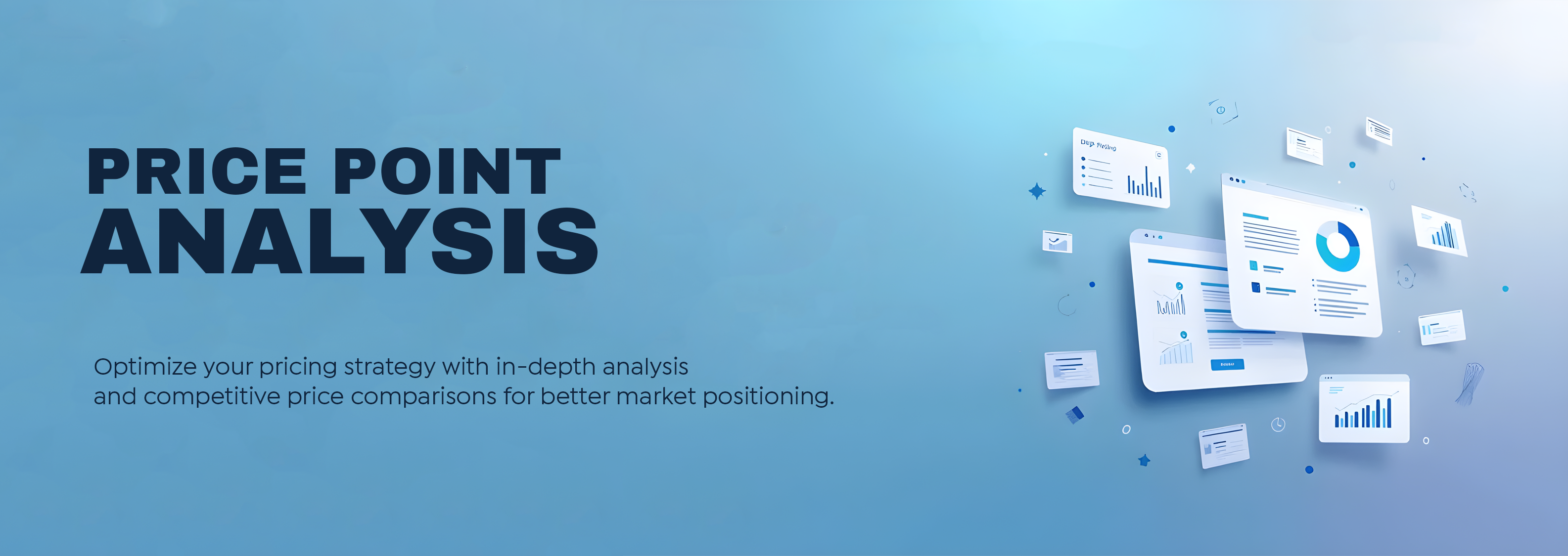
Price Point Analysis
Price point analysis is a crucial process that involves evaluating the pricing strategies of your products in relation to competitors and market demand on Amazon. By analyzing the price points of similar products, you can determine the optimal pricing strategy that maximizes profitability while remaining competitive.
This analysis helps in understanding customer price sensitivity, identifying potential opportunities for pricing adjustments, and ensuring that your products are priced to attract the right target audience. A well-executed price point analysis can lead to increased sales, improved profit margins, and a stronger market position.
Business Consultants
Startups in 2023




Price Elasticity
- Measure the price elasticity of demand for your product to understand how sensitive sales are to price changes.
- Identify the price points at which demand significantly increases or decreases.
- Use this information to find the sweet spot where price maximizes both sales volume and profitability.
Promotional and Discount Strategies
- Analyze the effectiveness of promotional pricing, such as discounts, coupons, and flash sales.
- Determine how temporary price reductions impact overall sales and customer acquisition.
- Develop a balanced approach to promotions that drives sales without eroding profit margins.
Price Testing and Optimization
- Implement A/B testing to compare the performance of different price points.
- Use the results to optimize your pricing strategy based on real customer behavior and sales data.
- Continuously monitor and adjust prices to adapt to market changes and maintain competitiveness.
Market Benchmarking
- Compare your product prices with those of direct competitors in your category.
- Identify the average price range for similar products to understand the market standard.
- Use benchmarking to determine whether your prices are too high, too low, or competitive.
Cost Analysis
- Evaluate the cost of goods sold (COGS) to ensure that your price covers production, shipping, and other expenses.
- Calculate the profit margin at various price points to identify the most profitable pricing strategy.
- Consider all costs, including Amazon fees, to set a price that maintains healthy margins.
Customer Price Sensitivity
- Analyze how changes in price impact customer purchasing behavior.
- Study customer reviews and feedback to gauge their perception of value at different price points.
- Use this data to adjust pricing to meet customer expectations while maximizing sales.
Competitor Pricing Strategies
- Review competitors’ pricing models, including dynamic pricing, discounts, and promotional offers.
- Identify patterns in how competitors adjust their prices in response to market conditions or sales events.
- Adapt your pricing strategy to remain competitive while differentiating your product’s value proposition.
Seasonal and Demand-Based Pricing
- Consider the impact of seasonality and demand fluctuations on your pricing strategy.
- Adjust prices during peak seasons or sales events to capitalize on increased demand.
- Lower prices during off-peak times to maintain sales volume or clear out inventory.
